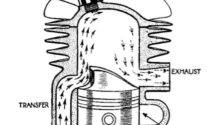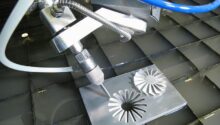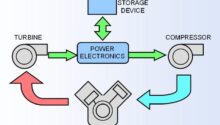What is Resistance/Spot Welding?
Spot welding (also known as resistance spot welding) is a resistance welding process. This welding process is used for welding two or more metal sheets together by applying pressure and heat from an electric current to the weld area.
It works by contacting copper alloy electrodes to the sheet surfaces, whereby pressure and electric current are applied and heat is generated by the passage of current through resistive materials such as low carbon steels.
How did Spot Welding work?
A form of resistance welding, spot welding is one of the oldest welding processes whereby two or more sheets of metal are welded together without the use of any filler material.
The process involves applying pressure and heat to the weld area using shaped alloy copper electrodes which convey an electrical current through the weld pieces. The material melts, fusing the parts together at which point the current is turned off, pressure from the electrodes is maintained and the molten “nugget” solidifies to form the joint.
uses of spot welding?
Spot welding has applications in a number of industries, including automotive, aerospace, rail, white goods, metal furniture, electronics, medical building, and construction.
Given the ease with which spot welding can be automated when combined with robots and manipulation systems, it is the most common joining process in high volume manufacturing lines and has in particular been the main joining process in the construction of steel cars for over 100 years.
Also Read Arc and Tig Welding
What is seam welding?
Seam welding or resistance seam welding is a subset of resistance welding, which is the process of welding two materials using electric current.
Seam welding is the process of joining two similar or dissimilar materials at the seam by the use of electric current and pressure. The process is mostly used on metals since they conduct electricity easily and can sustain relatively high pressures.
Seam welding is possible thanks to contact resistance created between the two metals.
As current passes between the metals, heat gets generated at the small gap. Electrodes maintain and control the flow of electricity.
Resistance seam welding is one among the most common welding processes used to join metal sheets with a continuous weld.
When two similar or dissimilar materials are pressed together, there will be a slight gap between them due to surface irregularities. In resistance seam welding, this gap creates an electrical resistance between the two materials and causes them to heat up at the seam.
This is also known as contact resistance.
The welding current is of primary importance in seam welding. The amount of heat generated at the seams will depend on the magnitude of the current flowing through it.
Advantages of resistance seam welding
Resistance seam welding has a unique set of advantages which makes it very favorable in many industries.
Airtight welds: One of the most important characteristics of a continuous weld is that it can create airtight and watertight seals. This is very important in creating metal structures that need air or water leakage protection, like air or liquid-tight vessels.
Fast weld process: Weld is possible at high speeds. And, since the whole process is automatic, resistance seam welding is faster than other alternatives like spot welding.
No filler/flux required: The weld is possible without using any filler or flux material.
Applications of seam welding
Resistance seam welding finds its application in the assembly of fuel tanks as it needs to be liquid-tight. It is also used for welding parts of vessels that need to be water or airtight.
Some other forms of welding can also create water and airtight seals, but they do not necessarily ensure a clean weld. Similar to what is achievable through seam welding.
The other common application is in welding pipes and tubes. Resistance seam welding is especially used in this field because it doesn’t use any fusion metals in the process.
Hence, there are no weld beads that would ruin the aesthetics of the tubes or pipes. This welding technique is capable of producing seamless joints that are hard to even feel at the joining surface.





